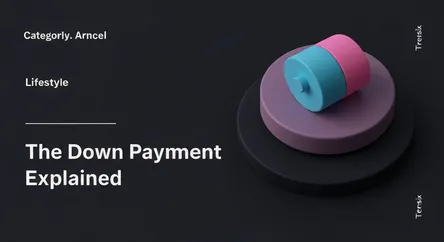Lifestyle
The Down Payment Explained

Learn what a down payment is, why it's a crucial first step in buying a home, and how the amount can impact your mortgage and overall finances.
What is it?
A down payment is the initial, upfront portion of a property's total purchase price that a buyer pays in cash. It is not part of the mortgage loan but is paid directly to the seller at the closing of a real estate transaction. The amount is typically expressed as a percentage of the purchase price, ranging from as low as 3% to the more traditional 20% or higher. For example, on a $300,000 home, a 20% down payment would be $60,000. This payment represents the buyer's initial equity in the home and demonstrates financial commitment to the lender.
Why is it trending?
In today's competitive real estate market, the topic of down payments is more relevant than ever. Fluctuating home prices and interest rates mean that the barrier to entry for homeownership remains high. Saving for a substantial down payment is a major financial hurdle for many, especially first-time buyers. Consequently, discussions around down payment assistance programs, creative saving strategies, and the pros and cons of lower down payment loans are trending as people seek viable paths to owning a home.
How does it affect people?
A down payment significantly impacts a homebuyer's financial situation. A larger down payment reduces the total amount that needs to be borrowed, resulting in a smaller mortgage and lower monthly payments. It can also help buyers secure a better interest rate and avoid paying for Private Mortgage Insurance (PMI), which is often required for down payments under 20%. For most people, the biggest effect is the challenge of accumulating the necessary funds, which can often delay their goal of homeownership for several years.